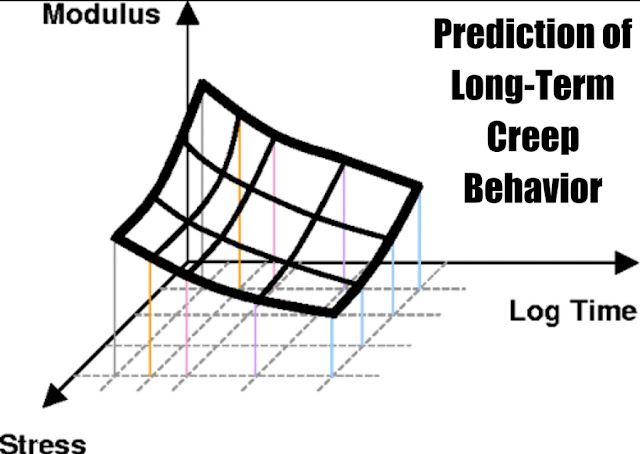PREDICTION OF LONG-TERM CREEP BEHAVIOR
Prediction of Long-Term Creep Behavior
Much time and effort has been expended in attempting to develop good short-time creep tests for accurate and reliable prediction of long-term creep and stress rupture behavior. It appears, however, that really reliable creep data can be obtained only by conducting long-term creep tests that duplicate actual service loading and temperature conditions as nearly as possible. Unfortunately, designers are unable to wait for years to obtain design data needed in creep failure analysis. Therefore, certain useful techniques have been developed for approximating long-term creep behavior based on a series of short-term tests. Data from creep testing may be plotted in a variety of different ways. The basic variables involved are stress, strain, time, temperature, and, perhaps, strain rate. Any two of these basic variables may be selected as plotting coordinates, with the remaining variables treated as parametric constants for a given curve. Three commonly used methods for extrapolating short-time creep data to long-term applications are the abridged method, the mechanical acceleration method, and the thermal acceleration method. In the abridged method of creep testing the tests are conducted at several different stress levels and at the contemplated operating temperature. The data are plotted as creep strain versus time for a family of stress levels, all run at constant temperature. The curves are plotted out to the laboratory test duration and then extrapolated to the required design life. In the mechanical acceleration method of creep testing, the stress levels used in the laboratory tests are significantly higher than the contemplated design stress levels, so the limiting design strains are reached in a much shorter time than in actual service. The data taken in the mechanical acceleration method are plotted as stress level versus time for a family of constant-strain curves all run at a constant temperature. The thermal acceleration method involves laboratory testing at temperatures much higher than the actual service temperature expected. The data are plotted as stress versus time for a family of constant temperatures where the creep strain produced is constant for the whole plot.
It is important to recognize that such extrapolations are not able to predict the potential of failure by creep rupture prior to reaching the creep design life. In any testing method it should be noted that creep-testing guidelines usually dictate that test periods of less than 1% of the expected life are not deemed to give significant results. Tests extending to at least 10% of the expected life are preferred where feasible.
Several different theories have been proposed to correlate the results of short-time elevated-temperature tests with long-term service performance at more moderate temperatures. One of the more accurate and useful of these proposals is the Larson–Miller theory.
The Larson–Miller theory that for each combination of material and stress level there exists a unique value of a parameter P that is related to temperature and time by the equation
P = (𝜃 + 460)(C + log10^t)
where,
P = Larson–Miller parameter, constant for a given material and stress level
θ = temperature, ∘F
C = constant, usually assumed to be 20
t = time in hours to rupture or to reach a specified value of creep strain
This equation was investigated for both creep and rupture for some 28 different materials
by Larson and Miller with good success. it is a simple matter to find a short-term combination of temperature and time that is equivalent to any desired long-term service requirement. For example, for any given material at a specified stress level the testconditions should be equivalent to the operating conditions.
.....Thank You.....


0 comments:
Post a Comment
Please do not enter any spam link in the comment box.